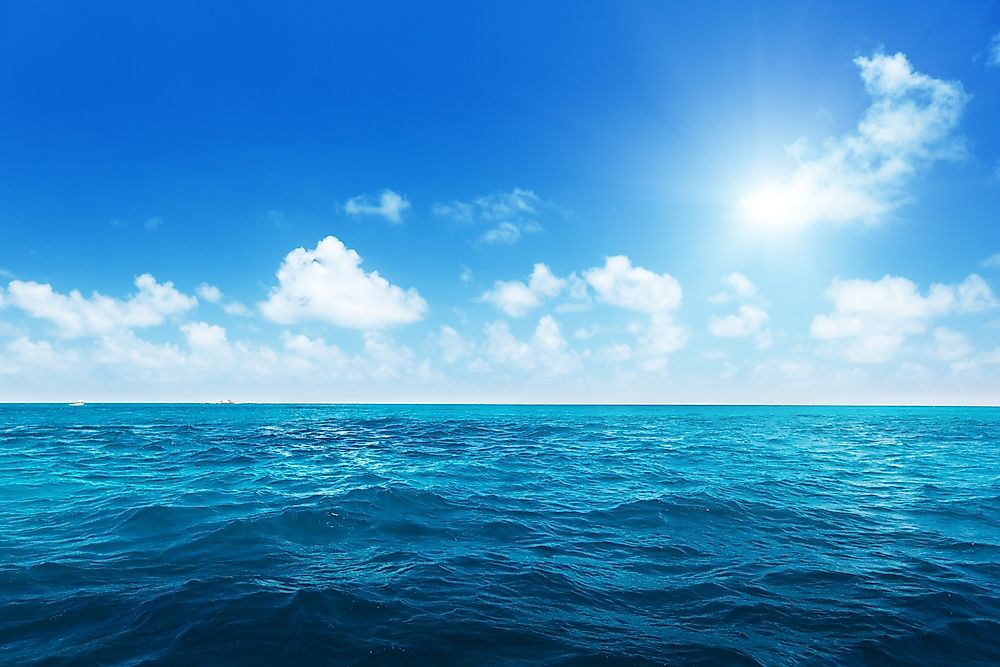How Much of the Earth is Water?

Approximately 71% of the earth's surface is covered by water. The oceans and the seas account for 97%. The rest exists as water vapor, in lakes and rivers, glaciers and ice caps, in the soil and underground, aquifers, and even in living organisms. Thanks to the water cycle, water is never idle, moves from one place to another, and changes from one form to the other.
The Volume of Water on the Planet
Water makes up a tiny fraction of the volume of the planet. The total volume of water adds up to about 332,500,000 mi3. This is enough to fit into a sphere with a diameter of 860 miles. Liquid freshwater in lakes, river swamps, and aquifers is estimated at 2,551,000 mi3. To break down the figures, 97% water is in the oceans, 2% is in the form of ice caps and glaciers, 0.62% is underground water, 0.009% is contained in freshwater lakes, 0.008% is in salt lakes and inland seas, 0.001% is in the atmosphere, and 0.0001% is flowing in rivers.
Freshwater Supply
Roughly 2.5% of the water on the planet is freshwater. About 69% is stored in ice caps and glaciers and 31% of the supply is accessible for human consumption. In total, only 0.00775% of the earth's water supply is available to humans. Some regions of the planet receive freshwater from melting glaciers during the summer. 30% of freshwater is underground, meaning that it is only available through springs or forced out of the ground. Rivers, swamps, and lakes account for less than 1% of the freshwater accessible to humans.
Surface Water
Surface water is any waterbody that lies on the surface of the earth including rivers, lakes, reservoirs, and streams. Approximately 80% of global water usage is surface water which also contributes to irrigation. Oceans are the largest source of surface water but cannot be consumed by humans because of high salinity. The planet’s surface water flows through a network of rivers and stream that obtain water through runoff or base flow.
Groundwater
Groundwater exists beneath the earth's surface but has to be at 100% saturation. Anything less than that is considered soil moisture. About 30% of the freshwater is underground. Groundwater travels through cracks and holes in the bedrock. When water congregates below the surface, it forms an aquifer.
Global Water Issues
Half of the world freshwater reserves are in Brazil, Canada, Indonesia, China, Russia, and Colombia. The global rise in population is fueling water problems across the world as more people are forced to share the scarce resource. A third of the worldwide population reside in "water-stressed" countries where only one in nine people has access to safe drinking water.











